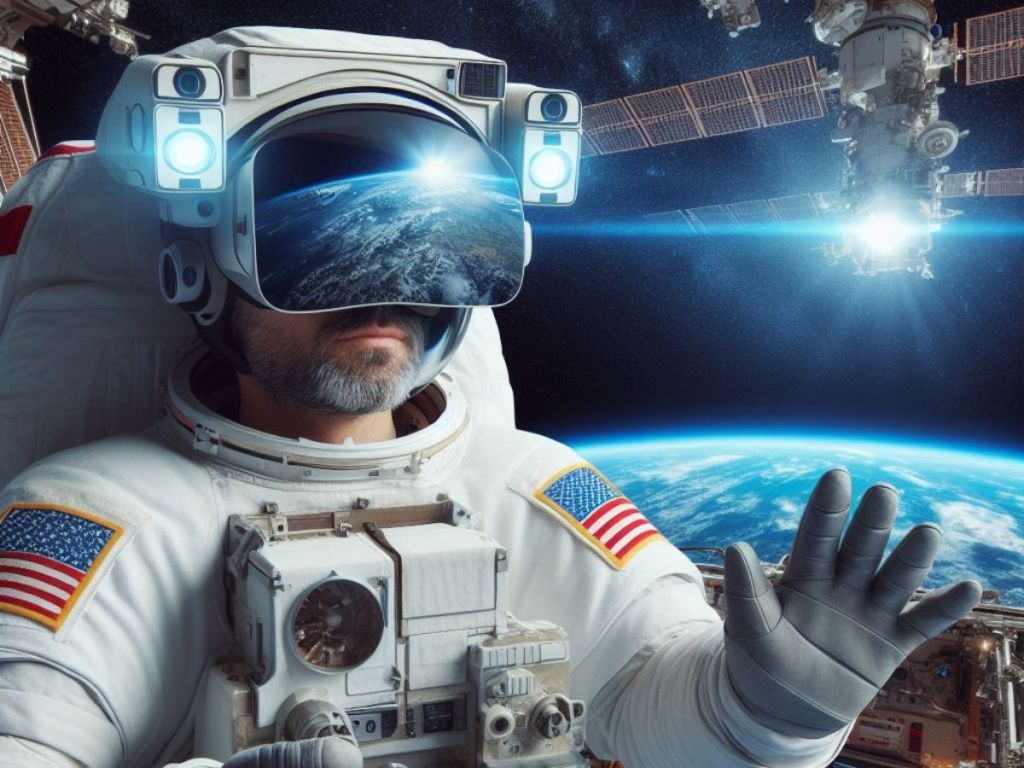For those of us who have seen the most recent episodes of the hit Netflix show Black Mirror, there was one episode that stood out for how gruesome it was. Not to give spoilers but it involved astronauts who were able to put their minds into robotic bodies that remained on Earth to help them keep sane while on a six-year mission in space. Unsurprisingly, things took a dark turn.
While scarily real robotic bodies are probably a while off, the concept of being able to transport astronauts back to Earth to help with their mental health while aboard the ISS is happening now with the use of VR.
HTC VIVE, the virtual reality platform, teamed up with XRHealth and Nord-Space, to send the first virtual reality headset for mental health use to the ISS. It will be used to support astronauts during their European Space Agency Huginn mission.
Thomas Dexmier, HTC VIVE’s Country Manager for Australia and New Zealand, told The Chainsaw getting a VR headset to work in a microgravity environment was actually a lot more complex than one might think.
“Our team tackled unique challenges to make this possible, as we needed to re-invent the headset tracking for microgravity conditions — not a simple feat!” Deximier said.
“One of the key hurdles we needed to overcome was the reliance of VR headsets on gravity vectors to align orientation — essentially to know what’s up and what’s down. While this makes sense on Earth, the lack of gravity in space, along with spacecraft mechanics, would lead to VR content drifting and becoming unstable, causing motion sickness and leaving astronauts unable to read, see, or control the content in the headset.
“We addressed this by tying the headset’s tracking algorithms to one of the controllers, which is fixed to a set position and acts as an anchor, telling the headset where to base all its movement.”
How does using VR help with mental health issues in astronauts?
As one might imagine, spending the better half of a year whizzing above your home planet instead of spending time on it could get tiresome.
“Astronauts remain highly isolated during their missions, which can last months or years at a time, and are confined to small spaces with limited contact with their loved ones,” Deximier said.
“We sought to alleviate the toll space missions have on astronauts’ mental health by providing a way to simulate soothing environments on Earth, whether that’s hiking a mountain trail, watching the sunset or swimming with dolphins.”
The first astronaut to test out the headsets is ISS Commander Andreas Morgensen. He will be using the headset for preventative care on his six- to eight-month mission.
“While immersive technology has been used in recent years to treat mental health issues like stress, anxiety and depression on Earth, we’re looking forward to supporting Commander Morgensen and testing out in real-time how VR can support astronaut wellbeing in space,” Deximier said.
We tested out a VIVE VR headset
Not wanting the astronauts to have all the fun using VR in space, we were sent a VIVE XR Elite headset to test out for ourselves, and while not quite the same one the astronauts use, it’s still pretty schmick.
The headset itself is pretty comfortable and easy to set up. There is also a function that maps out your room so you won’t run into anything while you’re deep in VR world.
Because I wanted to see what it was like to meditate like the astronauts do, I decided to stick to the meditation apps, and honestly it was really relaxing!
I personally find meditation difficult, my mind never stops, but having beautiful scenery and sounds around you does help to get you more in the zone.
I can totally see how this would help astronauts feel more connected to Earth while zooming around it.
I will say though, this headset is pretty expensive. It’ll set you back around $1,800. If you’re someone who is going to use it all the time I would say it’s worth the price, but if you want to dabble in the world of VR before diving in, then maybe start with something a little less pricey.



